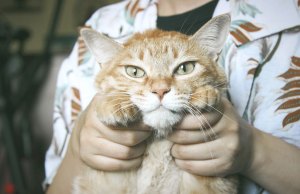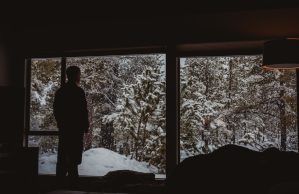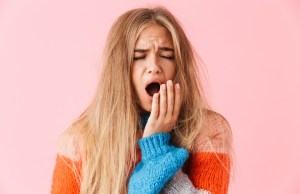
- Diurnal (day-time) mood variation happens when someone with major depressive disorder symptoms experiences notably worsening depressive symptoms at a certain time of the day, compared to other points in a 24 hr period.
- Morning depression, as it is sometimes referred to, is common, but in some cases, diurnal mood variation happens during the afternoon or evening. Diurnal mood variation may cause increased anxiety, alongside classic depression symptoms, as an individual’s major depressive symptoms intensify.
- Diurnal mood variation may seem like a mood episode, but isn’t as intense—nor does it last as long. The 4 recognized types according to the DSM-5 are major depressive episodes, manic episodes, hypomanic episodes, and mixed episodes.
- Many different bodily hormones fluctuate naturally during the day; these include leptin, testosterone, cortisol, and more. Notably, the body’s reward system and its pathways are less active in the afternoon, meaning that the 3-pm blues or afternoon slump reported by some people likely has a legitimate biological basis.
Often an associated symptom of major depressive disorder, diurnal mood variation occurs when a depressed individual notes a marked difference in mood over the course of a day. In a majority of cases, low mood is experienced in the early hours but it gradually improves throughout the day, hence its nickname in layman’s terms, “morning depression.” For others, though, diurnal mood variation can happen in the afternoons or evenings.
Diurnal mood variation may be a frustrating and debilitating symptom of depression, but this psychological and physiological response to the body’s natural rhythms is treatable. And as researchers uncover more clues related to diurnal mood variation, it may help refine our current understanding of the relationship between circadian rhythms and depressive disorders.

What Does “Diurnal” Mean?
The word diurnal means “during the day” and is usually used to describe animals or biological processes that are active during sunlit hours, as opposed to the term nocturnal which means “during the night.” Because humans are naturally diurnal animals, our circadian rhythms (the biological processes that dictate our sleep patterns, hormones, and more) regulate our mood while the sun is out. Diurnal mood variation is just the tip of the iceberg when it comes to understanding the interplay between circadian rhythms and mental health, a deeply complex issue that mental health professionals are working to better understand.
What Is Diurnal Variation of Mood?
Diurnal mood variation happens as a symptom of major depressive disorder, and during episodic periods, it causes sufferers to experience irritability, lethargy, sadness, feelings of overwhelm, and melancholia during a specific time of day. These symptoms, which may happen at any point in one’s day, become a noticeable pattern.
What is more difficult, though, is measuring the body’s mood in the same way that researchers are able to measure other fluctuating processes, such as the cycle of brain waves during active and restful periods. Still, compelling evidence indicates that diurnal mood variation occurs at the same time as an individual’s body temperature reaches its lowest point during a 24-hour period. Diurnal mood variation also seems to be worse in those with erratic sleep patterns.
This means that non-depressed people naturally experience diurnal mood variation. With this in mind, it’s more likely that diurnal mood variation doesn’t cause depression, considering that the body and mind routinely show predictable variability in hormones, energy levels, and biochemical responses. Instead, diurnal mood variation is likely a normal physiological response, which can increase or decrease the symptoms of depression, depending on the time of day.
What Is Diurnal Anxiety?
Diurnal anxiety, while not a clinically recognized term in the DSM-5, refers to the distress caused by diurnal mood variation symptoms. As mentioned above, diurnal mood variation is a symptom of major depressive disorder, not an anxiety disorder; but depressive symptoms can cause anxiety in some cases. Most studies have concluded that for those with diurnal anxiety, symptoms are most severe in the morning, and start to taper off during the evening.
What Are the 4 Main Types of Mood Episodes?
According to the DSM-5, there are 4 main types of mood episodes:
- Major depressive: A major depressive mood episode is a severe state of melancholia—reduced interest in daily tasks, sex, social interactions, and loss of appetite are all common signs of a major depressive episode. Some people also show a lack of energy, focus, and memory issues. At least 5 or more of the DSM-5’s listed symptoms must be present for at least 1 week to be recognized as a major depressive mood episode.
- Manic: Attributed to bipolar disorder I and II, manic states involve an inflated ego, lessened need for sleep, racing thoughts, troubling paying attention, an increase in feelings of agitation/restlessness, and risky decision-making, such as shopping sprees, sexual indiscretions, or animated social media posts. At least three or more of the symptoms above must be present for at least 1 week (unless hospitalization is necessary).
- Hypomanic: This mood episode is a more mild form of a clinical manic episode. Still, individuals who are experiencing a hypomanic mood episode will have a markedly increased or grandiose view of themselves, may be abnormally productive, may be overly social talkative, or willing to take unnecessary risks. Hypomanic states must occur for at least 4 days in order to be diagnosed.
- Mixed: These mood episodes happen when a manic and depressive episode occur during the same day, meaning that symptoms of both are present, but at different times. Mixed mood episodes are only clinically recognized when the symptoms for both a manic episode and for a major depressive episode are present nearly every day for at least a 1-week period.
Even though diurnal mood variation affects someone’s emotions in a way that makes it sound like a type of mood episode, it’s not. Instead, people with diurnal mood variation experience a small variation in the symptoms of their major depressive disorder—diurnal mood variation doesn’t cause major depressive, manic, hypomanic, or mixed mood episodes.
What Hormone Shows Diurnal Variation?
There are several hormones that show diurnal variation as a natural part of the body’s biological processes; our circadian rhythms. Some of these primary hormones include:
- Leptin
- Testosterone
- Cortisol
- Estrogen
- Melatonin
Current scientific beliefs hold that circadian rhythms are governed by the suprachiasmatic nucleus (SCN) within the hypothalamus, which controls diurnal cycles with the light cues it picks up on. There are also supplementary, peripheral clocks inside various bodily tissues outside of the brain, as well. Even though the rods and cones in our eyes assist with processing and filtering light and color, visually impaired and fully-blind individuals have their own diurnal patterns of hormone regulation, which seem to cycle on a greater-than 24-hour basis that is not fully understood.
Why Does My Mood Change In the Afternoon?
Some studies suggest that the brain’s reward systems are most active during the morning and evening hours, meaning that the 3 pm blues, the afternoon slump—whatever you call it—could be a legitimate biological response. Reward pathways are regulated by serotonin, dopamine, GABA, and norepinephrine (among others), but if these chemicals aren’t flowing throughout the brain, then we lose the motivation and pleasure we would otherwise receive from accomplishing tasks and interacting with others.
If it seems like you’re experiencing a detrimental shift in your mood in the afternoon, or at a certain time of day, just know that some diurnal mood variation is normal. However, if your emotional pattern becomes significantly worse, lasts longer than a few hours, and appears to resemble one of the mood episodes described above, you could be experiencing symptoms of major depressive disorder or an undiagnosed mood disorder. Take the time to consider whether you should talk to a mental health professional about your symptoms, as they can offer a diagnosis and/or help to alleviate your emotional distress.













